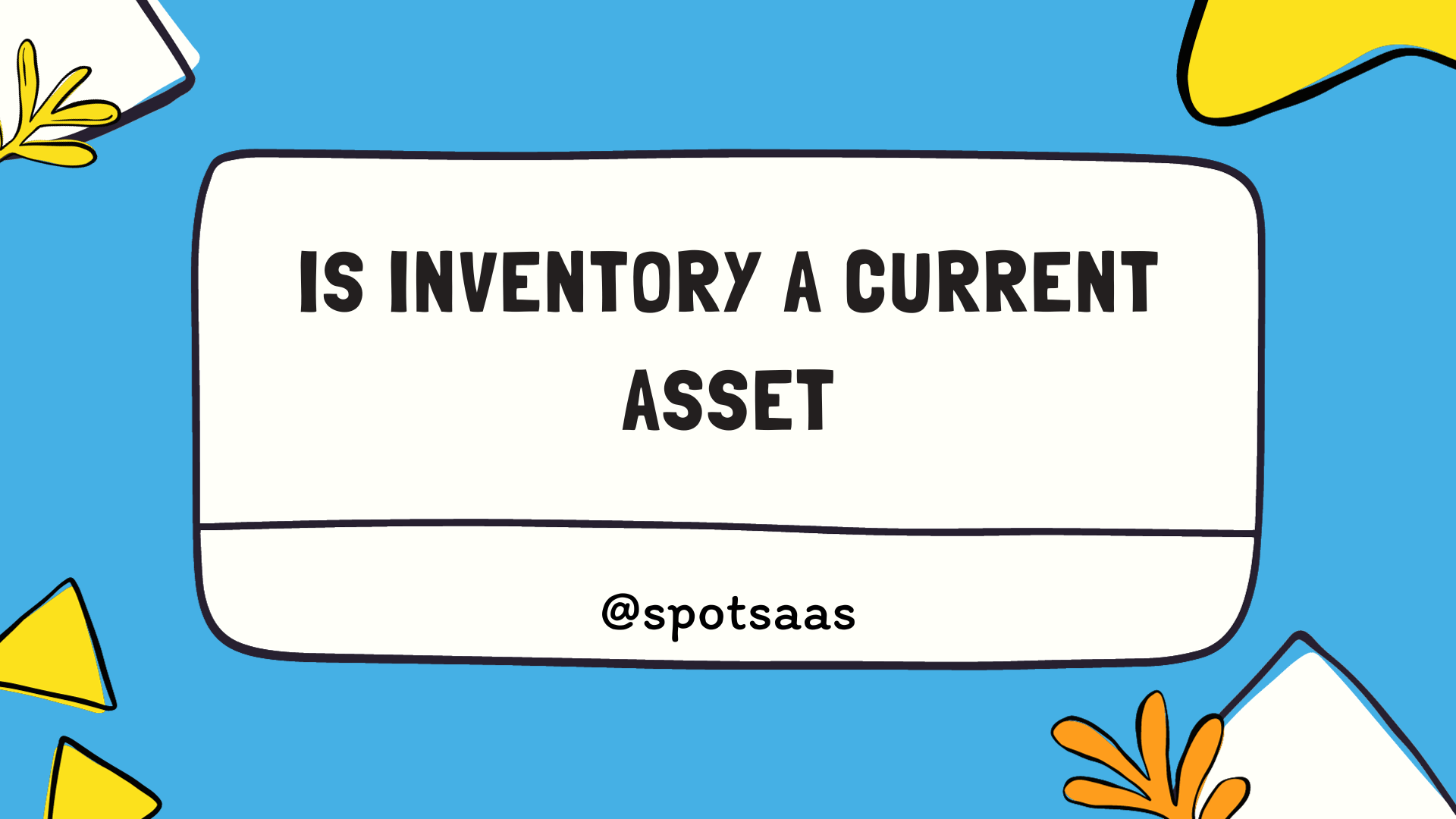Key Takeaways
- Inventory is considered a current asset because businesses plan to sell their stock within a year.
- Current assets include cash, marketable securities, accounts receivable, and prepaid liabilities in addition to inventory.
- Companies like Walmart, Target, Ford, Toyota, Apple, and Samsung use inventory as a current asset to generate revenue and meet customer demand.
- Calculating current assets involves adding up all the liquid assets that can be converted into cash within one year.
Understanding Current Assets
Current assets are a key component of a company’s balance sheet and represent resources that can be easily converted into cash or used up within one year.
Definition of current assets
Current assets are a category of balance sheet items that represent the value of all assets that can reasonably be expected to be converted into cash within one year. They are the key indicators of a company’s short-term liquidity, indicating its ability to cover its debts or obligations.
In essence, these are resources with economic value—like cash on hand and in bank accounts, accounts receivable, and stock inventory—that business owners expect to benefit from in the near future.
Current assets also include marketable securities and prepaid liabilities; both easily converted into cash or used up within a predictable time frame. Inventory is indeed considered a current asset since businesses plan to sell their stock for profit typically within a fiscal year.
Check out the Best Accounting Software in 2023
Types of current assets (cash, marketable securities, accounts receivable, inventory, prepaid liabilities, etc.)
Current assets play a crucial role in determining a company’s short-term financial health. They represent the value of all assets that can reasonably be converted into cash within one year.
Examples of Current Assets
| Type of Asset | Description |
|---|---|
| Cash | This is the most liquid asset and includes currency, coins, and balances in checking accounts. |
| Marketable Securities | These are investments that a company can quickly sell if they need cash. They typically include public stocks, mutual funds, or government bonds. |
| Accounts Receivable | These are payments due from customers who have bought goods or services on credit but haven’t paid for them yet. |
| Inventory | It includes raw materials, works-in-progress, and finished goods ready for sale. Companies intend to turn inventory into cash by selling products within the year, making it classified as a current asset. |
| Prepaid Expenses | These are payments made in advance for goods or services to be received in the future such as insurance premiums or rent. |
Is Inventory a Current Asset?
Inventory is considered a current asset due to its ability to be converted into cash within a short period of time.
Explanation and reasons why inventory is considered a noncurrent asset
Inventory holds a unique position as a current asset in the world of accounting. It’s all about timing: businesses plan to sell their finished products within one year, which nicely fits into the definition of current assets.
Current assets are those that can be converted into cash within 12 months.
This realization comes from understanding what inventory actually is – stock in different stages of production. So whether these items are raw materials waiting for assembly or finished goods ready for sale, they’re poised to become cash sooner rather than later.
The goal is to convert these tangible objects (the inventory) into liquid capital (cash), all within a single financial year! That’s why we accountants see inventory as part and parcel of the current assets category.
Examples of companies and their use of inventory as a current asset
Companies across various industries utilize inventory as a current asset. For instance, retail giants such as Walmart and Target rely heavily on their inventory to generate revenue.
These companies carefully manage their stock levels to ensure they have sufficient products available to meet customer demand. In the automotive industry, Ford and Toyota use inventory as a current asset by maintaining a wide range of vehicle models in their showrooms and warehouses.
This allows them to quickly respond to customer preferences and fulfil orders promptly. The technology sector also utilizes inventory as a current asset, with companies like Apple and Samsung strategically managing their supply chains to keep popular devices in stock while minimizing excess inventory.
How to Calculate Current Assets
To calculate current assets, simply add up all the cash and other liquid assets a company has, such as accounts receivable and inventory, that can be converted into cash within one year.
Formula for calculating current assets
To calculate current assets, you need to add up all the liquid assets that a company possesses. This includes cash, cash equivalents, accounts receivable, stock inventory, marketable securities, and prepaid liabilities.
The formula for calculating current assets is quite simple: Current Assets = Cash + Accounts Receivable + Inventory + Marketable Securities + Prepaid Liabilities. By using this formula, businesses can assess their short-term liquidity and understand their ability to convert these assets into cash within a year.
Real-world examples of calculating current assets
To calculate current assets, you need to add up all the liquid assets that a company has. This includes cash, accounts receivable, marketable securities, and inventory. Let’s take a look at some real-world examples of how companies calculate their current assets.
Example 1: Company A
Company A has $10,000 in cash, $5,000 in accounts receivable from customers who owe them money, and $15,000 worth of inventory. To calculate their current assets, they would add up these amounts: $10,000 + $5,000 + $15,000 = $30,000.
Example 2: Company B
Company B has $8 million in cash and cash equivalents (short-term investments that can easily be converted into cash), $3 million worth of marketable securities (investments that are easy to buy or sell), and $12 million worth of inventory.
Using Current Assets in Business
Investors and businesses rely on current assets to assess a company’s short-term liquidity and ability to convert these assets into cash.
How investors and businesses use current assets
Investors and businesses rely on current assets to assess a company’s short-term liquidity and financial health. Current assets, such as cash, accounts receivable, and inventory, provide insights into a company’s ability to convert its assets into cash quickly.
Investors use this information to evaluate the company’s working capital and determine if it can meet its current liabilities. Additionally, financial ratios that utilize current assets, like the current ratio, help investors gauge a company’s overall performance and efficiency.
Properly managing and valuing inventory as a current asset is crucial for businesses as it ensures they have enough products to meet customer demand while avoiding excess or obsolete stock that can tie up valuable resources.
Financial ratios that use current assets
Financial ratios provide valuable insights into a company’s health and performance. They analyze current assets to assess liquidity, operational efficiency, and profitability. Here are some of the key ratios that use current assets:
Key Financial Ratios
| Function | Ratio | Formula |
|---|---|---|
| Measures a company’s ability to pay off its short-term liabilities with its short-term assets. | Current Ratio | Current Assets / Current Liabilities |
| Assesses a company’s short-term liquidity by excluding inventory from current assets. | Quick Ratio | (Current Assets – Inventory) / Current Liabilities |
| Indicates whether a company has enough short-term assets to cover its short-term debt. | Working Capital Ratio | Current Assets – Current Liabilities |
| Helps a company understand how efficiently it is managing its stock to generate sales. | Inventory Turnover Ratio | Cost of Goods Sold / Average Inventory |
| Shows the average number of days it takes a company to sell its inventory. | Days Sales in Inventory | 365 days / Inventory Turnover Ratio |
Importance of properly managing and valuing inventory as a current asset
Properly managing and valuing inventory as a current asset is crucial for businesses. By effectively tracking and controlling inventory levels, companies can avoid overstocking or understocking their products, which can lead to financial losses.
Additionally, accurately valuing inventory helps businesses determine the true worth of their assets and make informed decisions about pricing, production, and sales strategies. With proper management and valuation of inventory, businesses can improve cash flow, reduce carrying costs, minimize waste, and enhance overall profitability.
Conclusion
In conclusion, inventory is considered a current asset in accounting. It represents the stock of goods that a company plans to sell within a year. Managing and valuing inventory properly is crucial for businesses as it impacts their short-term liquidity and overall financial health.
Understanding basic financial terms like current assets helps investors and companies evaluate the ability to convert assets into cash and make informed decisions about their operations.
FAQs
1. What is a current asset?
A current asset is an item that can be easily converted into cash within one year or the operating cycle of a business, whichever is longer.
2. Is inventory considered a current asset?
Yes, inventory is typically classified as a current asset because it represents goods that are expected to be sold or consumed within the next year.
3. How does inventory affect a company’s financial statements?
Inventory affects a company’s financial statements by being reported on the balance sheet as a current asset and by impacting the cost of goods sold (COGS) on the income statement.
4. Why is it important for businesses to track their inventory accurately?
Accurately tracking inventory is crucial for businesses to ensure they have enough stock to meet customer demand and avoid overstocking or understocking, which can negatively impact sales and profitability.
5. Can inventory become obsolete or lose value over time?
Yes, inventory can become obsolete if there are changes in market trends or technological advancements. It can also lose value due to factors like expiration dates, damage, or changes in consumer preferences. Regular evaluation of inventory helps identify potential obsolescence and minimize losses.



